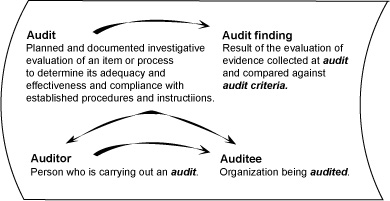ARCHIVÉE 2.4.5. Non-Hierarchical Relationships (Associative Networks)
Contenu archivé
L’information dite archivée est fournie à des fins de référence, de recherche ou de tenue de documents. Elle n’est pas assujettie aux normes Web du gouvernement du Canada et n’a pas été modifiée ni mise à jour depuis son archivage. Pour obtenir cette information dans un autre format, Contactez-nous.
Consulter le Pavel en ...
Español Português Italiano Nederlands العربية
In associative relationships, concepts are linked by spatial or temporal proximity and may share non-essential features. Such relationships include the following types:
- producer-product: bake - bread
- action-result: presidential election - president elect
- action-tool: hammering - hammer
- container-contents: bottle - fruit juice
- cause-effect: humidity - mould
- opposites: winner - loser
The following diagram was taken from Tutorial on Terminology Work, HUTCHESON/MICHAUD, SCC CAC/ISO/TC 37, 1995: 21.

An example of associative relationships is based on the following concepts (taken from Tutorial on Terminology Work, HUTCHESON/MICHAUD, SCC CAC/ISO/TC 37, 1995: 21):
- audit
- Planned and documented investigative evaluation of an item or process to determine its adequacy and effectiveness and compliance with established procedures and instructions.
- audit finding
- Result of the evaluation of evidence collected at audit and compared against audit criteria. "Audit finding" is in a relationship of action-result with "audit."
- auditor
- Person who is carrying out an audit. "Auditor" is in a relationship of actor-actionwith "audit."
- auditee
- Organization being audited by an auditor. "Auditee" is in a relationship of agent-object with "audit."
- Date de modification :